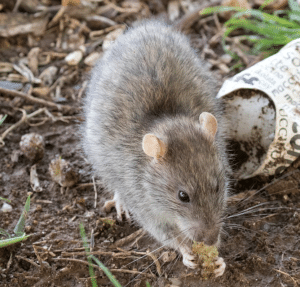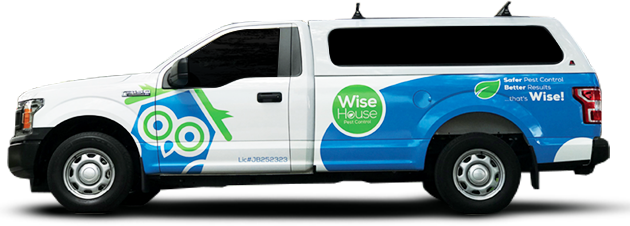Imagine flicking on the kitchen light late at night, only to see a brown rat scurry across the floor. Meet the Norway rat, also known as the “brown rat” or “sewer rat.” These resilient pests are masters of survival, thriving in diverse environments, including the warm and humid climate of South Florida. With lifespans of 1-2 years and a rapid reproductive rate, even a small number of these rodents can quickly lead to a major infestation. They aren’t just an unsightly nuisance; Norway rats are notorious for spreading diseases, causing significant structural damage, and contaminating food supplies.
Understanding their behavior and vulnerabilities is important to effectively eliminate them from your home. In this post, we’ll identify what makes your home so appealing to them. You’ll also learn about their life cycle, preferred nesting sites, and the telltale signs of an infestation. Most importantly, we’ll provide you with some proven strategies to help you get rid of these intruders and keep them out of your home for good.

The Norway rat (Rattus norvegicus), also known as the brown rat, is a common rodent pest in South Florida. These sizable, sturdy rodents are easily recognized by their robust bodies, blunt noses, and small ears. They can grow to lengths of 9 to 11 inches, not including their tails, which are shorter than their bodies.
Norway rats are well-adapted to a variety of environments but are particularly common in urban and suburban areas. They establish nests both indoors and outdoors, often in basements, sewers, and ground-level structures. They are omnivorous and can feed on a wide range of food, including garbage, grains, and small animals.
While they may not directly attack humans, Norway rats are notorious for spreading diseases, contaminating food, and causing structural damage with their gnawing habits. Their rapid reproduction and adaptability make them particularly challenging to control once they establish themselves in an area.
Size –Norway rats are notably large rodents, often reaching lengths of 9 to 11 inches, with their tails adding additional length.
Color – They have a brown or grayish-brown fur with a lighter underside.
Shape – Their bodies are robust and heavy with a blunt nose and small ears that are covered with fur. Their tails are shorter than their bodies and are scaly.
Mobility – Norway rats are excellent burrowers and climbers but are not good at jumping. They can squeeze through small openings to enter buildings.
Active Hours – Norway rats are nocturnal, meaning they are most active at night. They forage for food and water during the night and hide in their nests during the day.
Common Locations – These rats prefer ground-level or below-ground nesting sites, such as sewers, crawl spaces, and burrows in the ground. They are often found near food sources, such as kitchens, pantries, and garbage areas
Norway rats are known for their resilience and adaptability to various environments, especially urban and suburban areas. They are nocturnal and opportunistic feeders, consuming a wide variety of food, including garbage, grains, and even small animals. Their burrowing habits can cause significant damage to structures and landscapes.
The Norway rat’s life cycle unfolds in three main stages: birth, juvenile, and adult. These rats are incredibly prolific breeders, with female Norway rats capable of producing up to 12 litters each year. Each litter typically contains 6-12 young. This rapid reproductive rate means their populations can skyrocket quickly if not kept under control.
Norway rats are adept burrowers, creating extensive burrow systems with multiple entrances. These burrows provide them with protection from predators and harsh weather. They prefer to nest in hidden, undisturbed areas close to food and water sources, such as basements, crawl spaces, and sewers.
Identify the Enemy – Norway rats are large, brown rodents with blunt noses and small ears. They can grow up to 11 inches long, excluding their tails, which are shorter than their bodies.
Find Their Hideouts – Norway rats prefer ground-level or below-ground nesting sites. Look for them in basements, crawl spaces, sewers, and burrows around your home.
Cut Off Their Food Supply – Keep your home clean. Store food in airtight containers, clean up spills immediately, and take out the trash regularly. Do not leave pet food out overnight.
Eliminate Water Sources – Fix leaky pipes and faucets, and do not leave standing water in sinks or pet bowls. Rats need water to survive.
Seal Entry Points – Rats can squeeze through small openings. Seal gaps around pipes, baseboards, windows, and doors with caulk or steel wool.
Apply Rodenticides – Use rodenticides specifically designed for rats. Follow label instructions carefully and keep them away from children and pets.
Consider Professional Pest Control – For severe infestations, consider hiring a professional pest control service. They have the experience and tools to eliminate rats and prevent future infestations effectively.
Be Persistent – Rat control is an ongoing process. Do not give up if you see a few rats after initial treatment. Keep your home clean and continue to use preventive measures.
Yes, Norway rats can cause significant structural damage by gnawing on electrical wires, wooden structures, and insulation. Their burrowing habits can also undermine foundations and landscaping.
A severe infestation is indicated by frequent sightings of live rats, finding large numbers of droppings, discovering multiple nests, and noticing gnaw marks on wires and structures. Hearing scratching noises in walls or ceilings at night can also be a sign of a significant infestation.
Norway rats can transmit diseases such as Leptospirosis, Salmonella, Rat-Bite Fever, and Hantavirus. They can also carry parasites like fleas and mites, which can further spread diseases.
If you find a rat nest, it is best to remove it carefully while wearing protective gloves and dispose of it in a sealed plastic bag. Clean the area thoroughly and use disinfectant to eliminate any remaining pathogens. Consider contacting a professional pest control service to help remove the rat nest and effectively treat your home.

Ready to send away pests without harming your pets? Getting started with Wise House Environmental Services is as easy as 1-2-3:
With Wise House Environmental Services, you get more than just effective pest control; you get peace of mind, knowing that your home is without pests and safer for your pets.
Our approach to pest control combines science with safety, offering you the kind of targeted, effective solutions that you won’t find with just any other pest control service. Our services have made a world of difference for homeowners, and we can do the same for you. Your pets will thank you for it!
We serve Port St. Lucie,Lake Worth, Boyton Beach, Palm Beachand the Treasure Coast.


© 2023 All Rights Reserved. | Sitemap